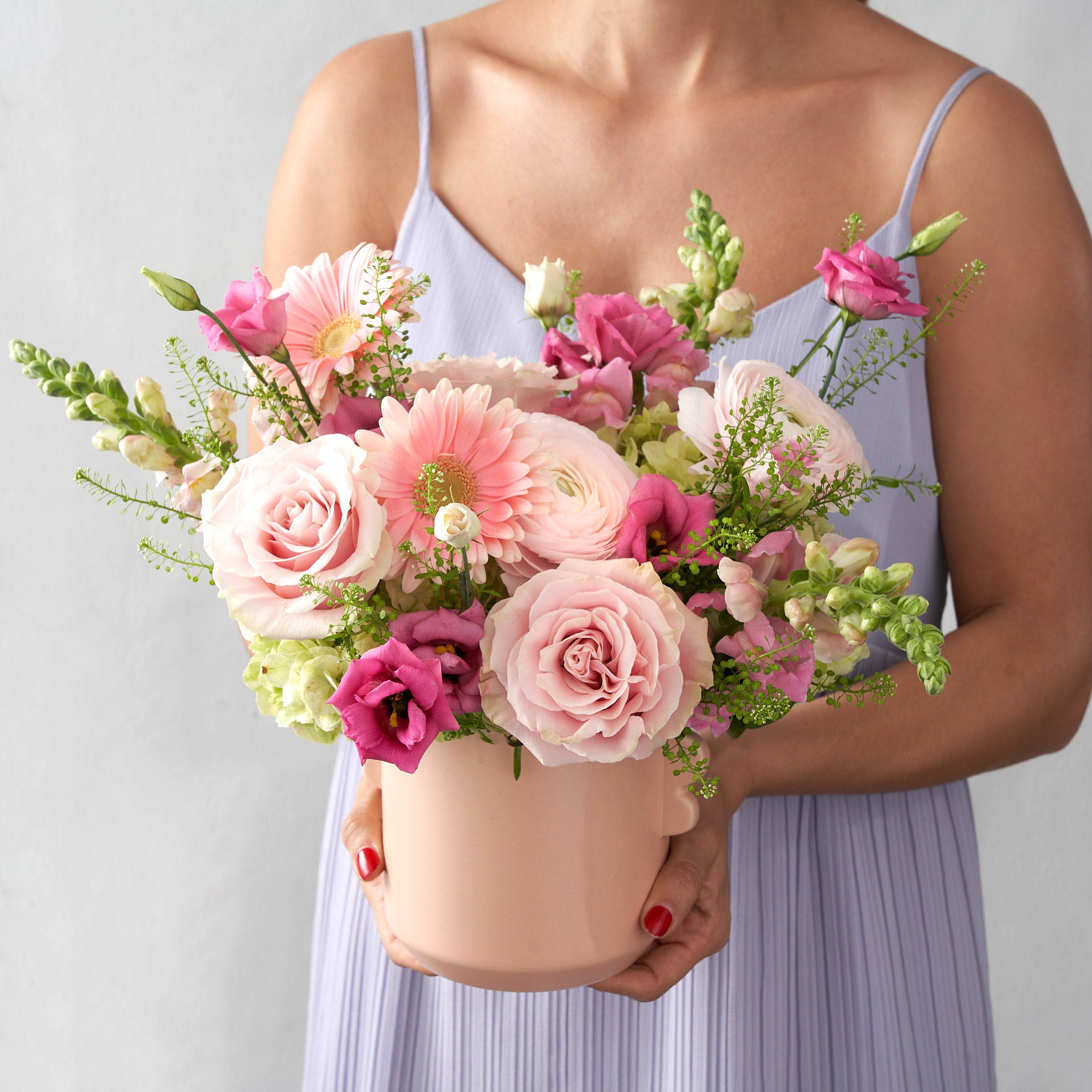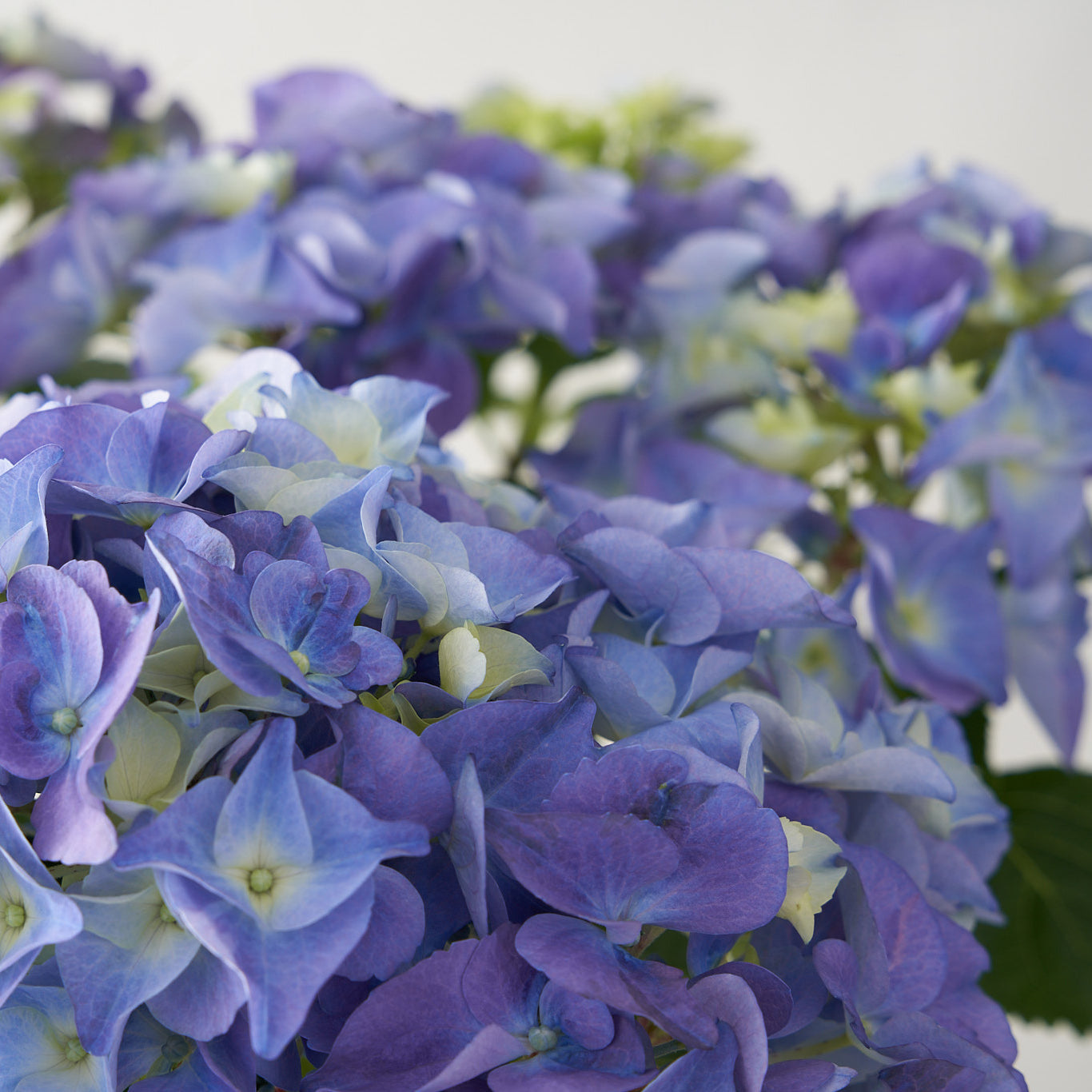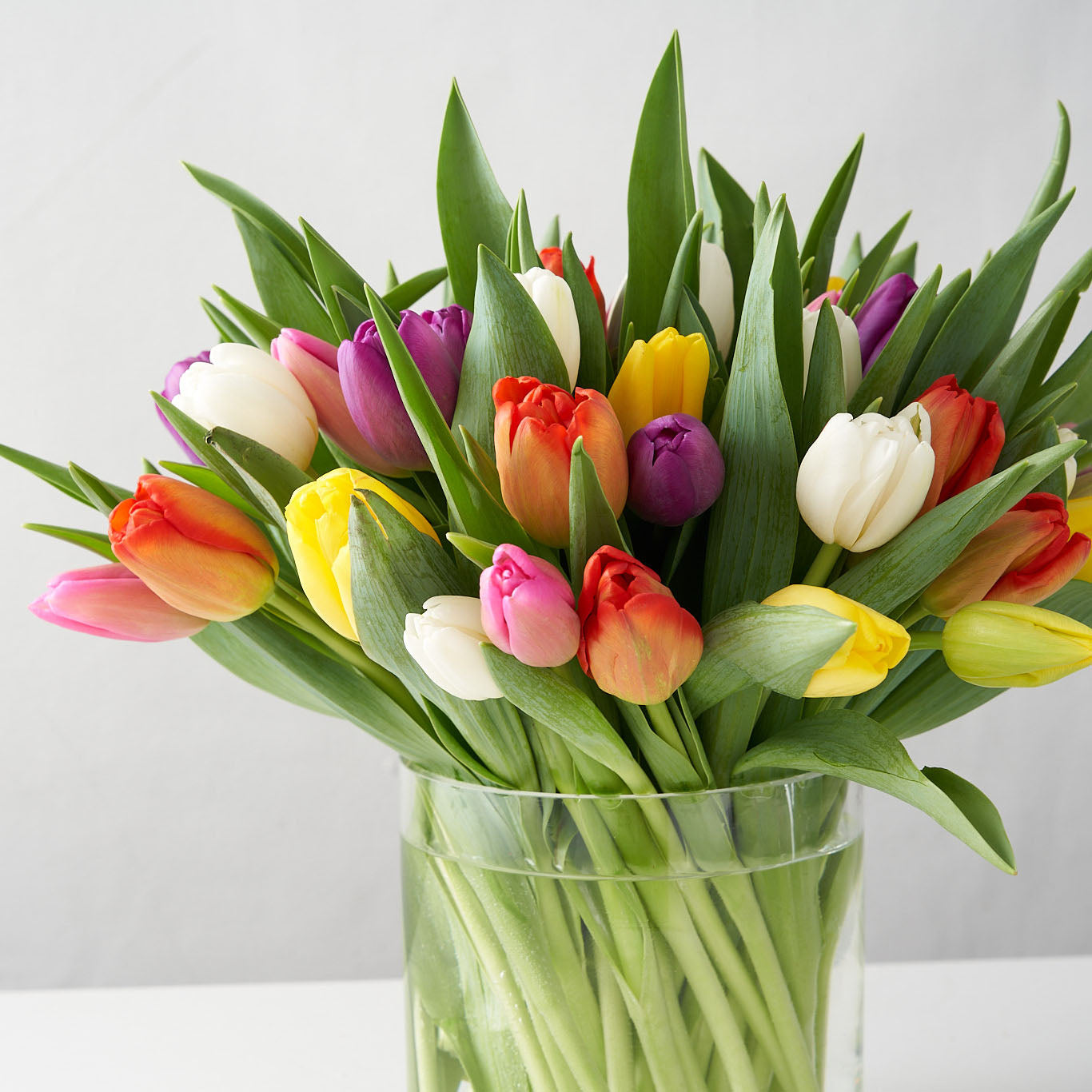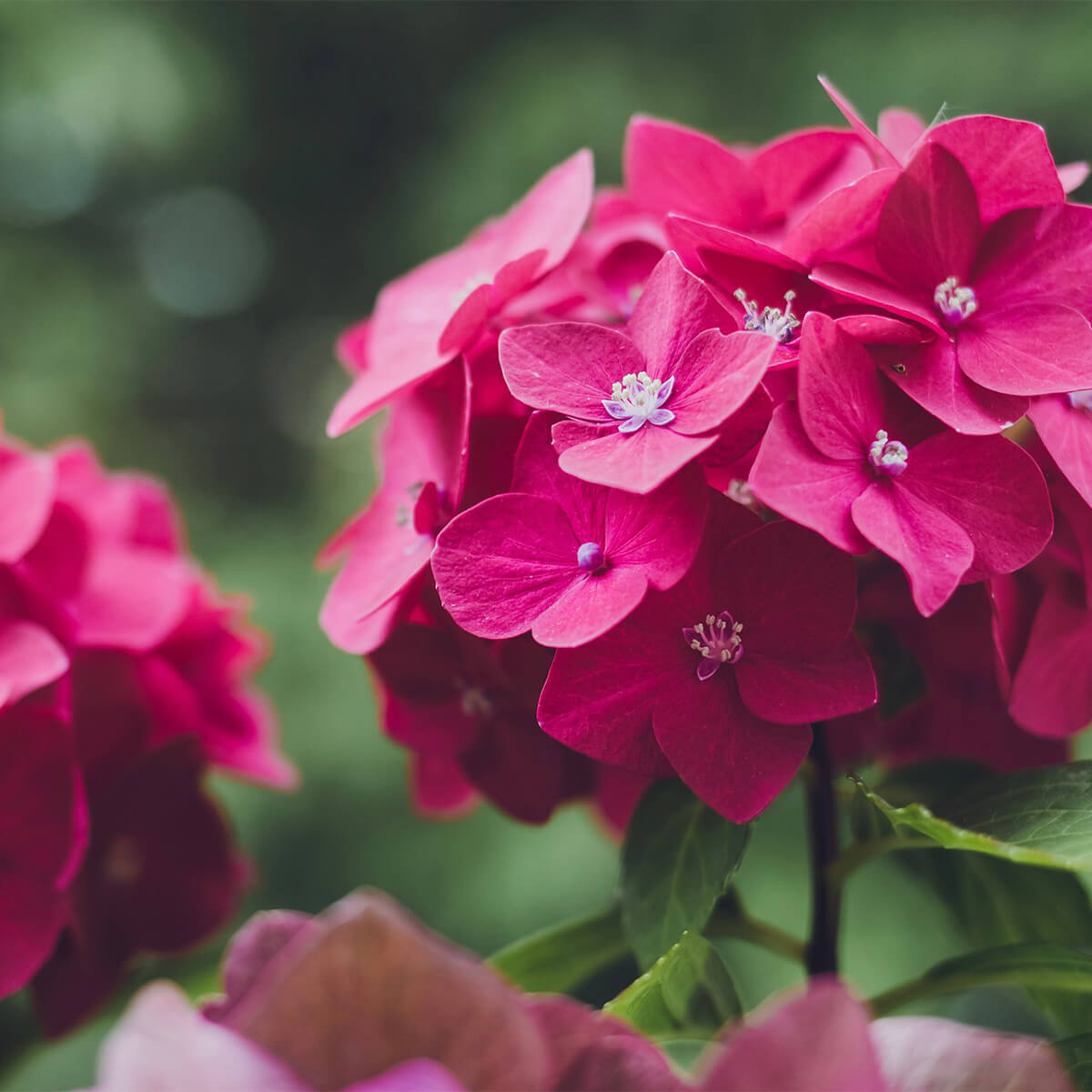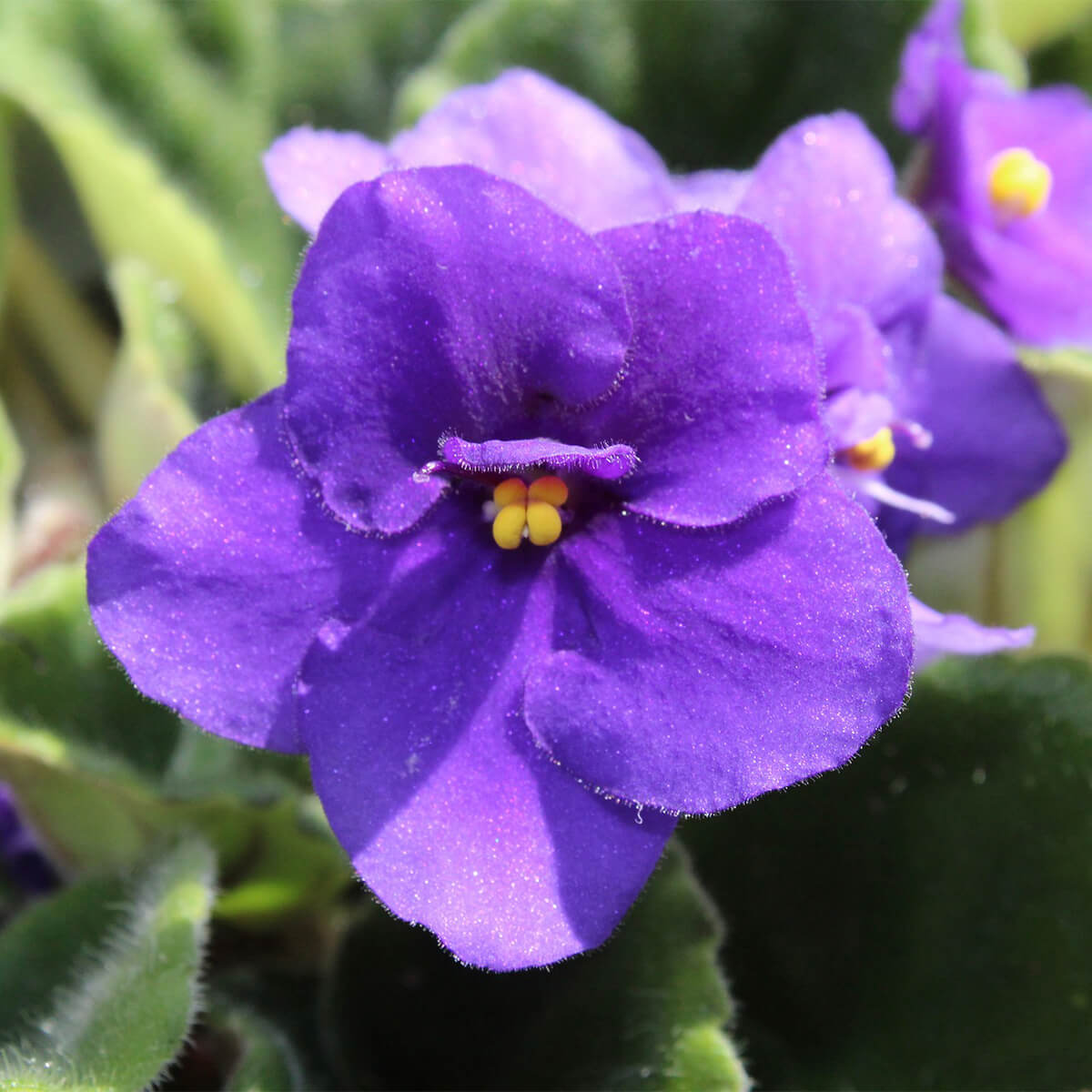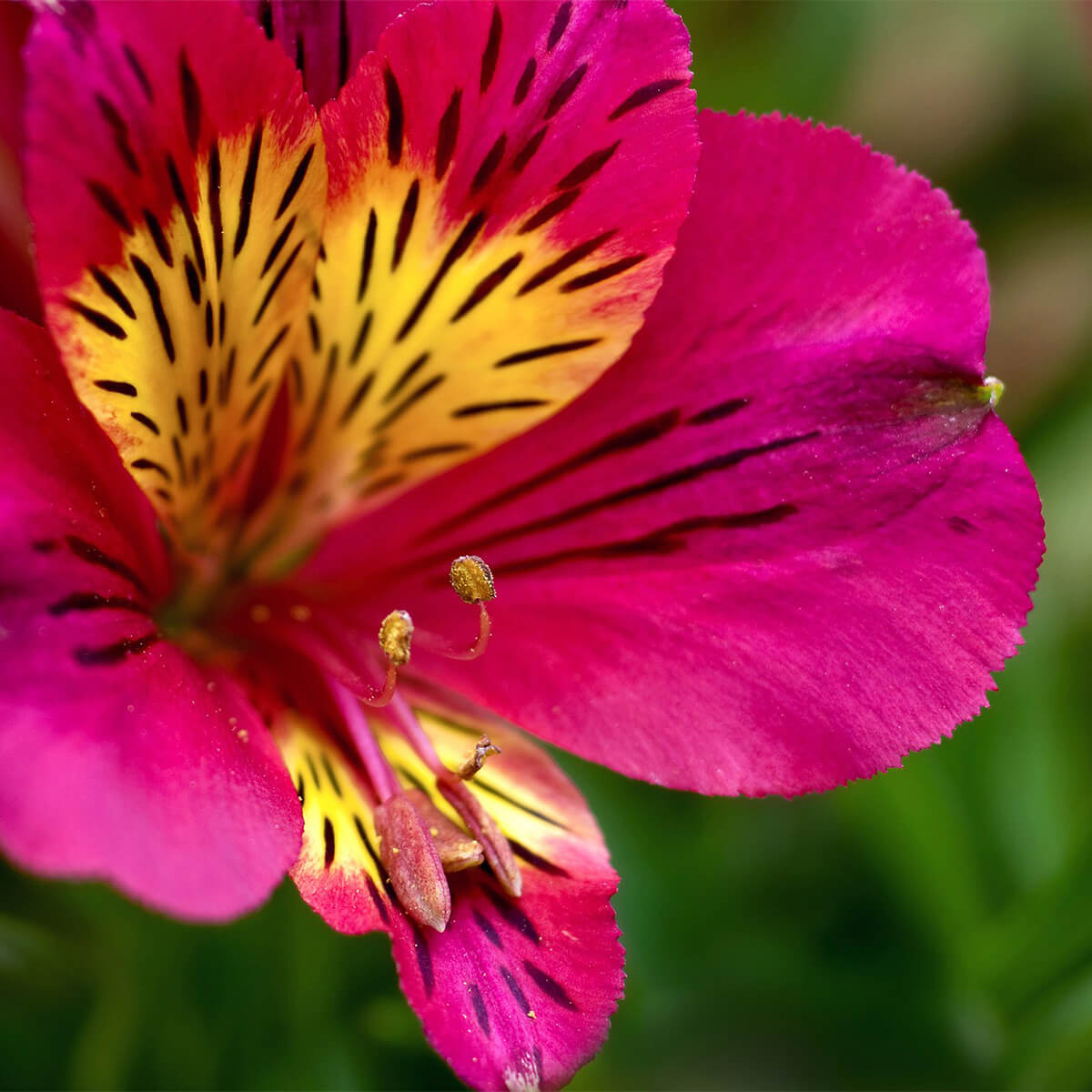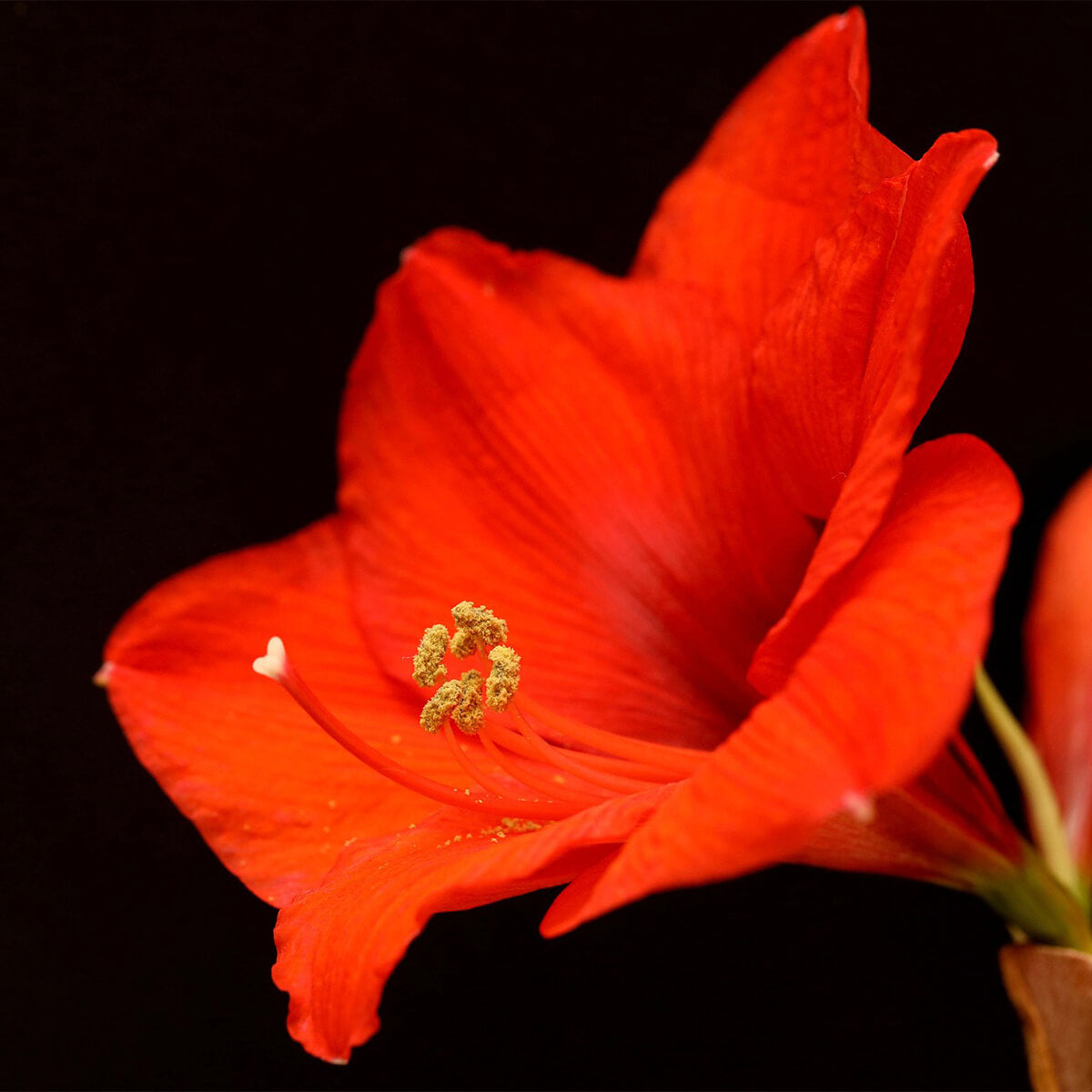Hydrangea
Symbolism: Hydrangea flowers represent gratitude, grace, and beauty. They radiate abundance due to their lavish number of flowers and generous round shape. Different colours can hold different meanings:
- Pink: heartfelt emotion
- Blue: frigidity and apology
- White: boasting or bragging
- Purple: desire to deeply understand someone
Description: Hydrangea flowers are known for their large, showy clusters in colors like white, pink, blue, and purple. Clusters can range from a few inches to over a foot across. The overall plant size can vary from compact shrubs to larger shrubs or small trees, with heights ranging from 2 to 15 feet or more. Flower color can be influenced by soil pH.
Named after: Hydrangea stems from the Greek word hydros, meaning “water” and angos, meaning “jar”. The name was given to the plant because of its shape, which resembles an ancient water pitcher.
Latin/Scientific name: Hydrangea
Native to: Asia and South America. They were brought to Europe on the first Dutch East India Company ships.
Flowering period: Throughout the spring, summer and early fall seasons. In hot climates, hydrangeas may stop blooming in the heat of summer, but will rebloom in the fall.
Vase life: 5 to 9 days
Popular use in floral arrangements or bouquets: Hydrangeas are commonly used in floral arrangements for weddings and birthdays, as well as in memorial bouquets. Their versatile nature makes them suitable for various occasions and arrangements.
When in stock in our shops: Year-round (cut hydrangeas) featured in our arrangements and bouquets. We also carry potted hydrangeas as part of our flowering indoor plant collection during the spring season and Easter/Passover Holidays.
Potted plant care
Light
-
Place your potted hydrangea plant in a location that receives bright, indirect sunlight.
-
Avoid direct sunlight as it can scorch the leaves.
Soil
-
Use a well-draining potting mix that contains perlite or sand to ensure proper drainage.
-
Hydrangea plants prefer slightly acidic soil with a pH between 5.5 and 6.5.
Water
-
Water your hydrangea plant when the top inch of soil feels dry to the touch.
-
Water the plant thoroughly until water runs out of the drainage holes in the bottom of the pot.
-
Avoid over watering as it can cause root rot.
Temperature & Humidity
-
Hydrangea plants prefer cool temperatures (60-70°F, 15-21°C).
-
They also prefer a humid environment, so placing a tray of water near the plant or using a humidifier can help maintain adequate humidity levels.
Feeding
-
Fertilize your hydrangea plant every 2-3 weeks with a balanced, water-soluble fertilizer during the growing season (spring and summer).
-
Use a fertilizer that is specifically formulated for acid-loving plants.
-
Avoid fertilizing during the winter months when the plant is dormant.
Transitioning Indoors to Outdoors
-
Hydrangea plants are typically grown outdoors in the ground, but they can also be grown in containers.
-
If you decide to transition your hydrangea plant from indoors to outdoors, do so gradually to avoid shock.
-
Start by placing the plant in a shaded outdoor area for a few hours a day and gradually increase the exposure to sunlight over time.
-
Ensure the outdoor soil is well-draining to prevent waterlogged conditions.

